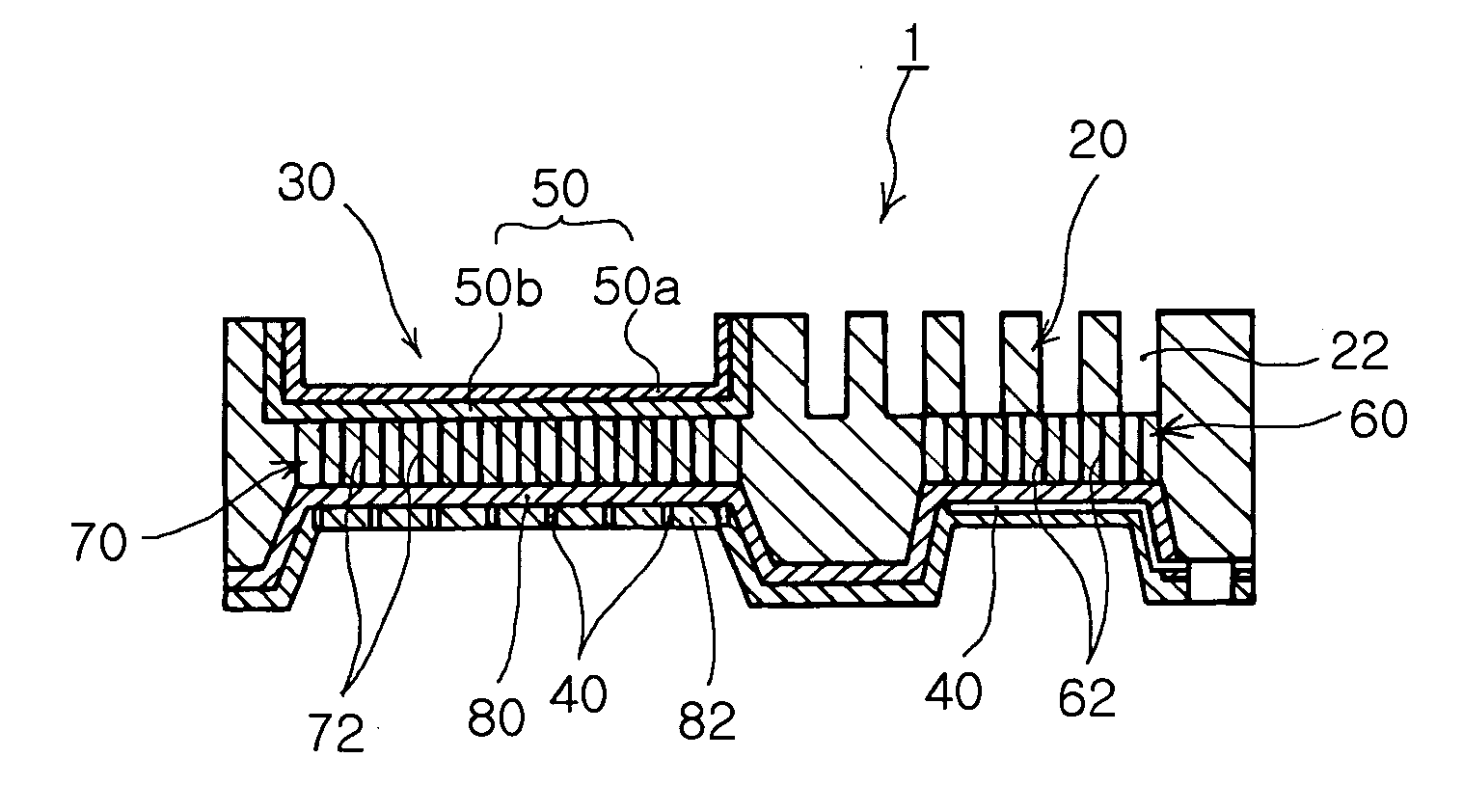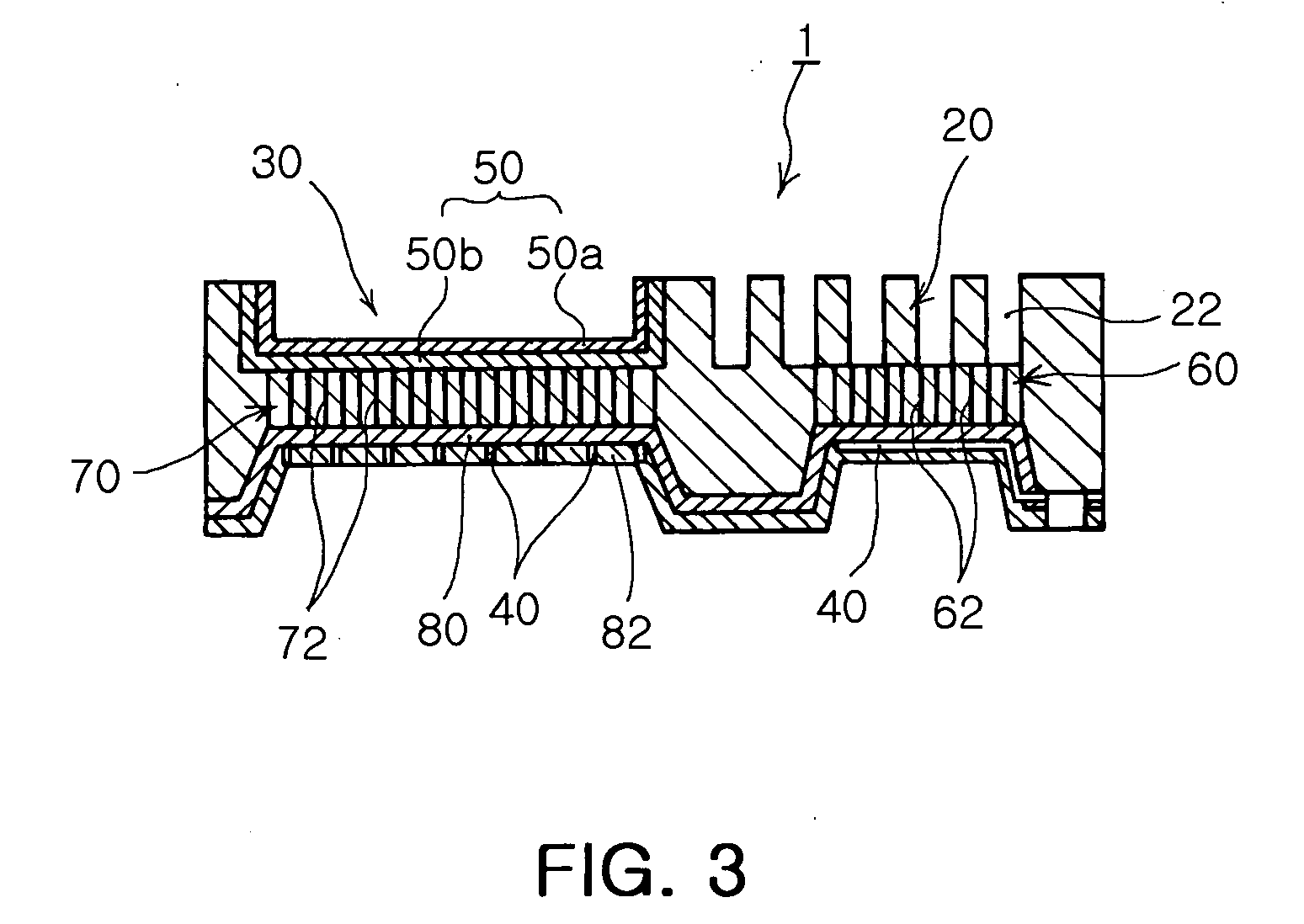Reformer for fuel cell
a fuel cell and reformer technology, applied in electrochemical generators, chemical/physical/physicochemical processes, bulk chemical production, etc., can solve the problems of dmfc depreciation in its practical value, the problem of miniaturization of fuel cells, and the improvement of functions and services, so as to prevent heat loss, improve heat absorption, and improve the effect of heat absorption
- Summary
- Abstract
- Description
- Claims
- Application Information
AI Technical Summary
Benefits of technology
Problems solved by technology
Method used
Image
Examples
Embodiment Construction
[0058] Preferred embodiments of the present invention will now be described in detail with reference to the accompanying drawings.
[0059] The reformer 1 (in particular, micro reformer) for a fuel cell according to certain embodiments of the present invention is aimed to mitigate the difficulty of maintaining the heat characteristics of the conventional reformer and increase a catalyst area to increase catalytic capability. Thus, ultimately, the reformer 1 of the invention is aimed to generate high-purity hydrogen gas with removal of CO, thereby enhancing the output density of the fuel cell supplied with the hydrogen gas.
[0060] The reformer for a fuel cell according to the present invention is one used in the PEMFC which mainly uses hydrogen (gas) as fuel.
[0061]FIGS. 3 and 4 illustrate the reformer 1 for a fuel cell with superior heat characteristics according to the present invention.
[0062] As shown in FIGS. 3 and 4, the reformer 1 according to the present invention includes a ba...
PUM
 Login to View More
Login to View More Abstract
Description
Claims
Application Information
 Login to View More
Login to View More - R&D
- Intellectual Property
- Life Sciences
- Materials
- Tech Scout
- Unparalleled Data Quality
- Higher Quality Content
- 60% Fewer Hallucinations
Browse by: Latest US Patents, China's latest patents, Technical Efficacy Thesaurus, Application Domain, Technology Topic, Popular Technical Reports.
© 2025 PatSnap. All rights reserved.Legal|Privacy policy|Modern Slavery Act Transparency Statement|Sitemap|About US| Contact US: help@patsnap.com



